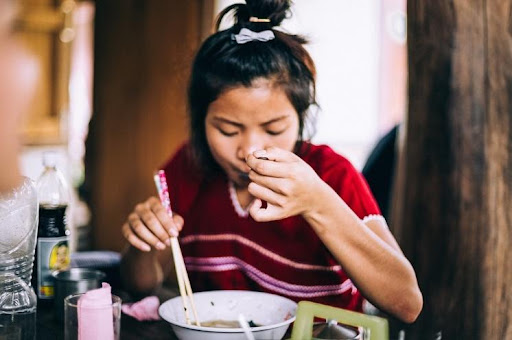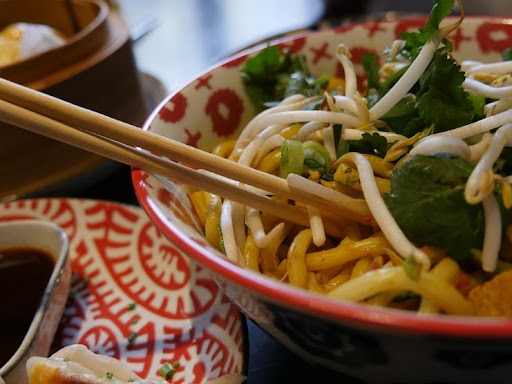
A staple carbohydrate in many Asian countries, yellow noodles are a versatile ingredient that can be enjoyed in many ways, from stir-frying to being paired with soups. Characterized by their yellow appearance, yellow noodles are dense and chewy, hence suitable to be used for extended cooking and absorbing robust flavours.
Yellow because of eggs?
To understand why noodles are yellow, let’s first take a look at the key ingredients that are used to make noodles. Typically, most commercial yellow noodles are made from 4 key ingredients: wheat flour, water, salt and alkaline salt.

A common misconception is that yellow noodles are yellow because of the use of eggs. However, this is not true. Yellow noodles are yellow due to a reaction that happens between the alkaline water and flour. Flavones, a naturally occurring component in flour, are usually colourless. However, when placed at alkaline pH, flavones turn yellow. Therefore, it is the reaction between flavones in flour and alkaline salt that causes noodles to turn yellow.
Why use alkaline salt?
A common form of alkaline salt used to make yellow noodles is lye water, also known as ‘kansui’. Lye water is a food-grade alkaline solution that is used in many cuisines all over the world and is perfectly safe for consumption. Lye water is added to give noodles an elastic, springy and firm texture. Noodles with a good bite are also less likely to turn mushy when added to broths and soups.
Check out Vitamee’s Fresh Yellow Noodles!
Looking for some yellow noodles for your next meal? Check out Vitamee’s yellow noodles! Produced locally in Singapore and 100% fresh, our yellow noodles are springy and firm to the bite.
References:
- https://link.springer.com/chapter/10.1007/978-3-319-12865-8_3
- https://redhousespice.com/lye-water/




